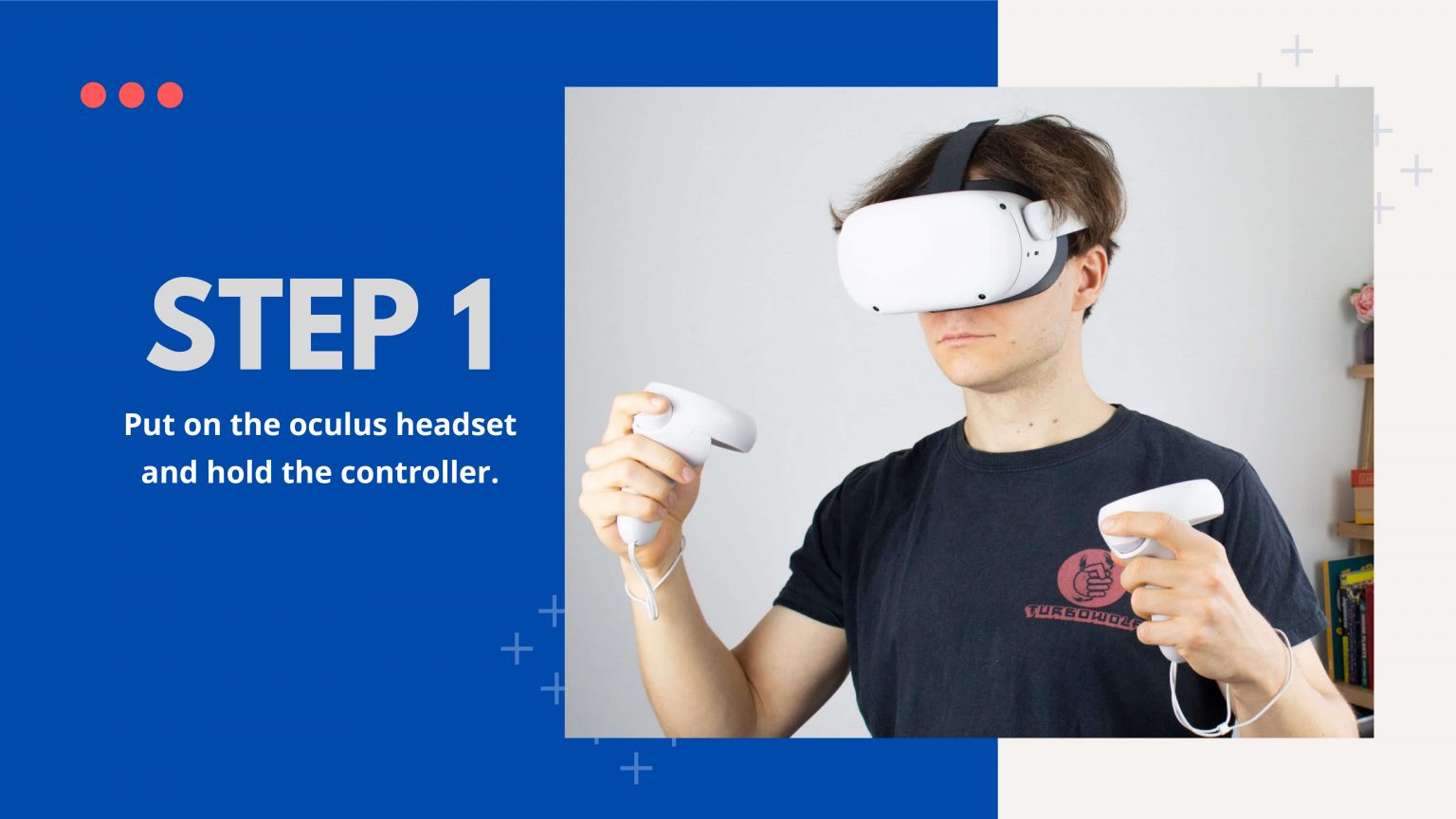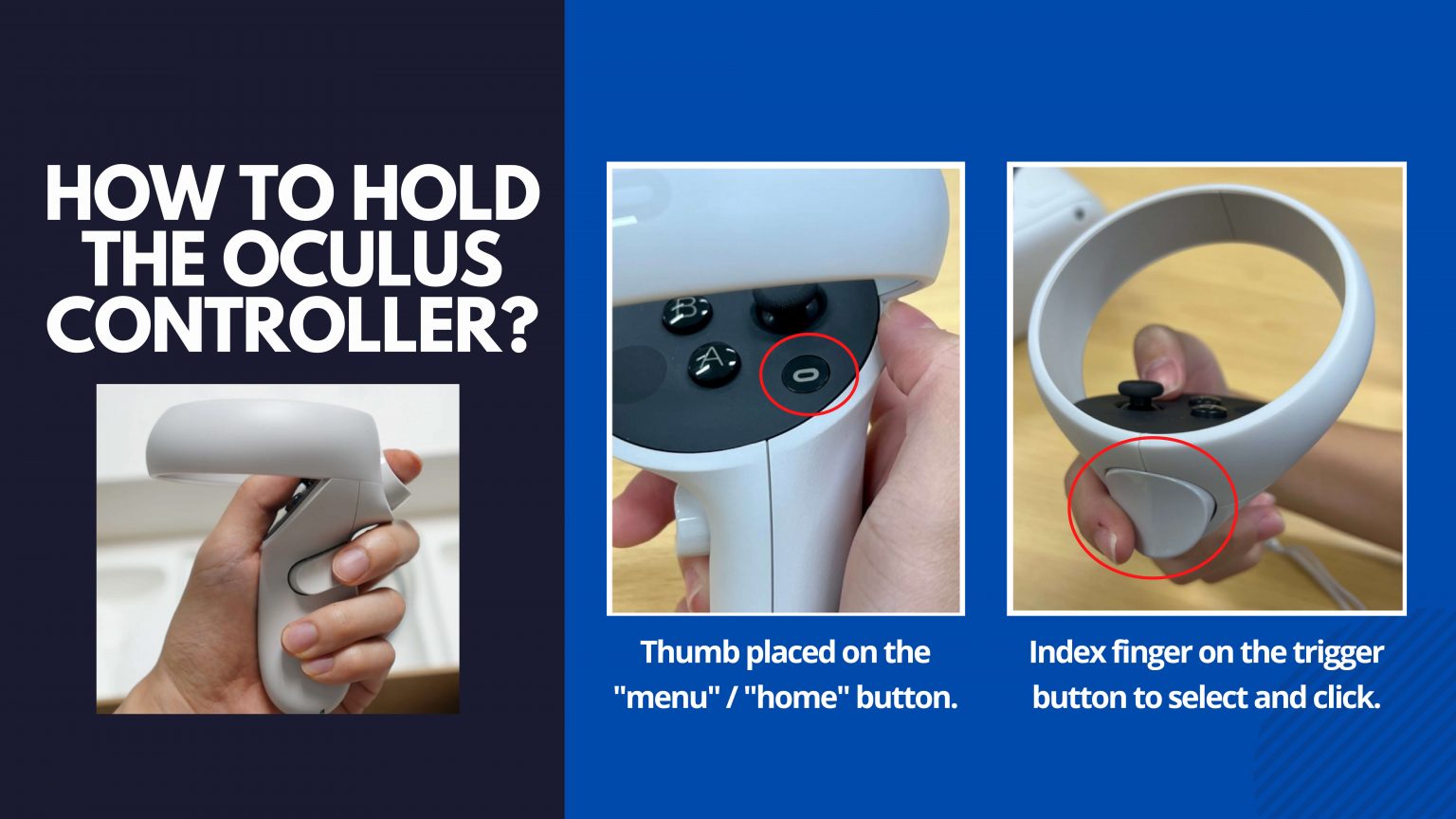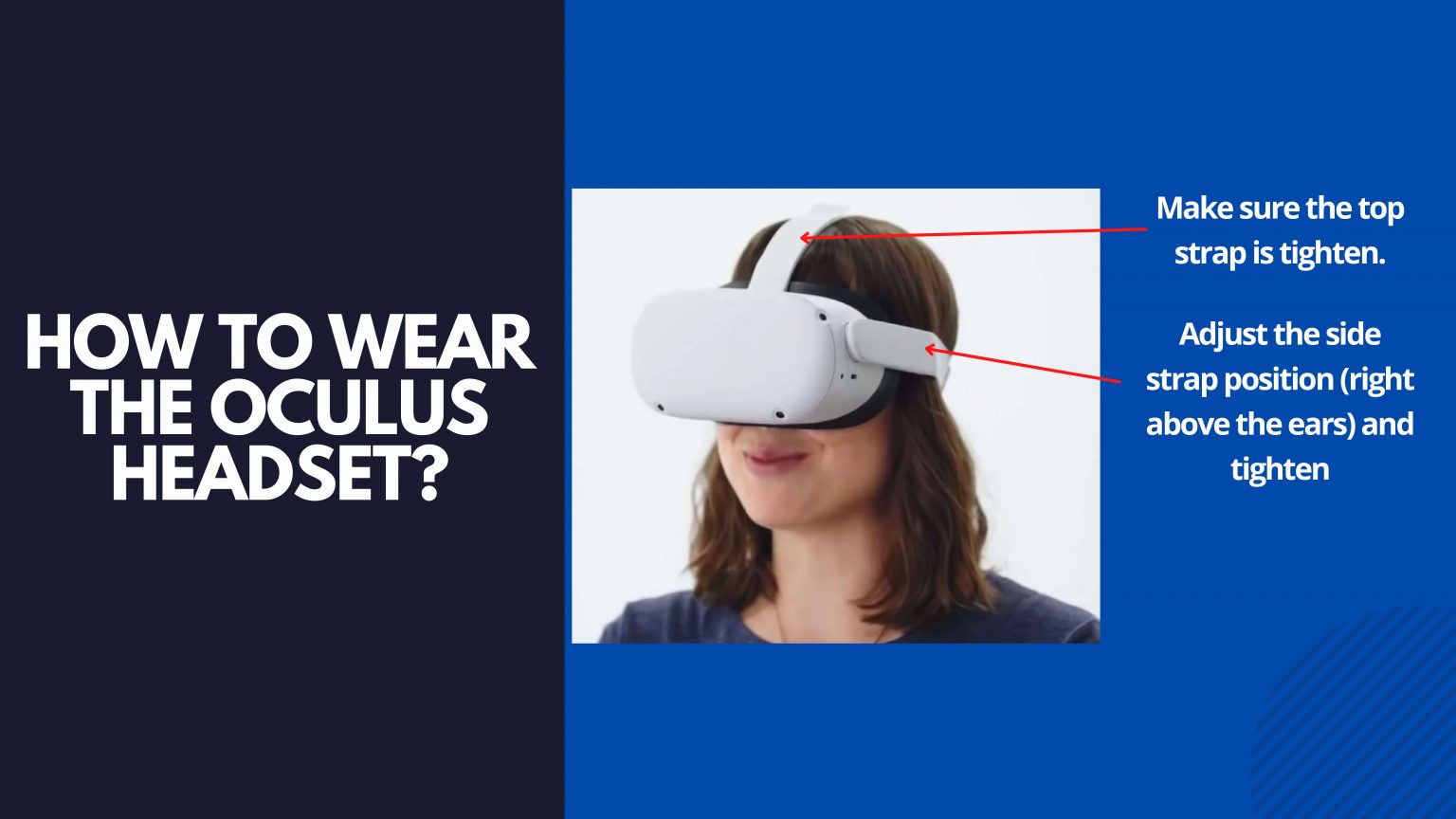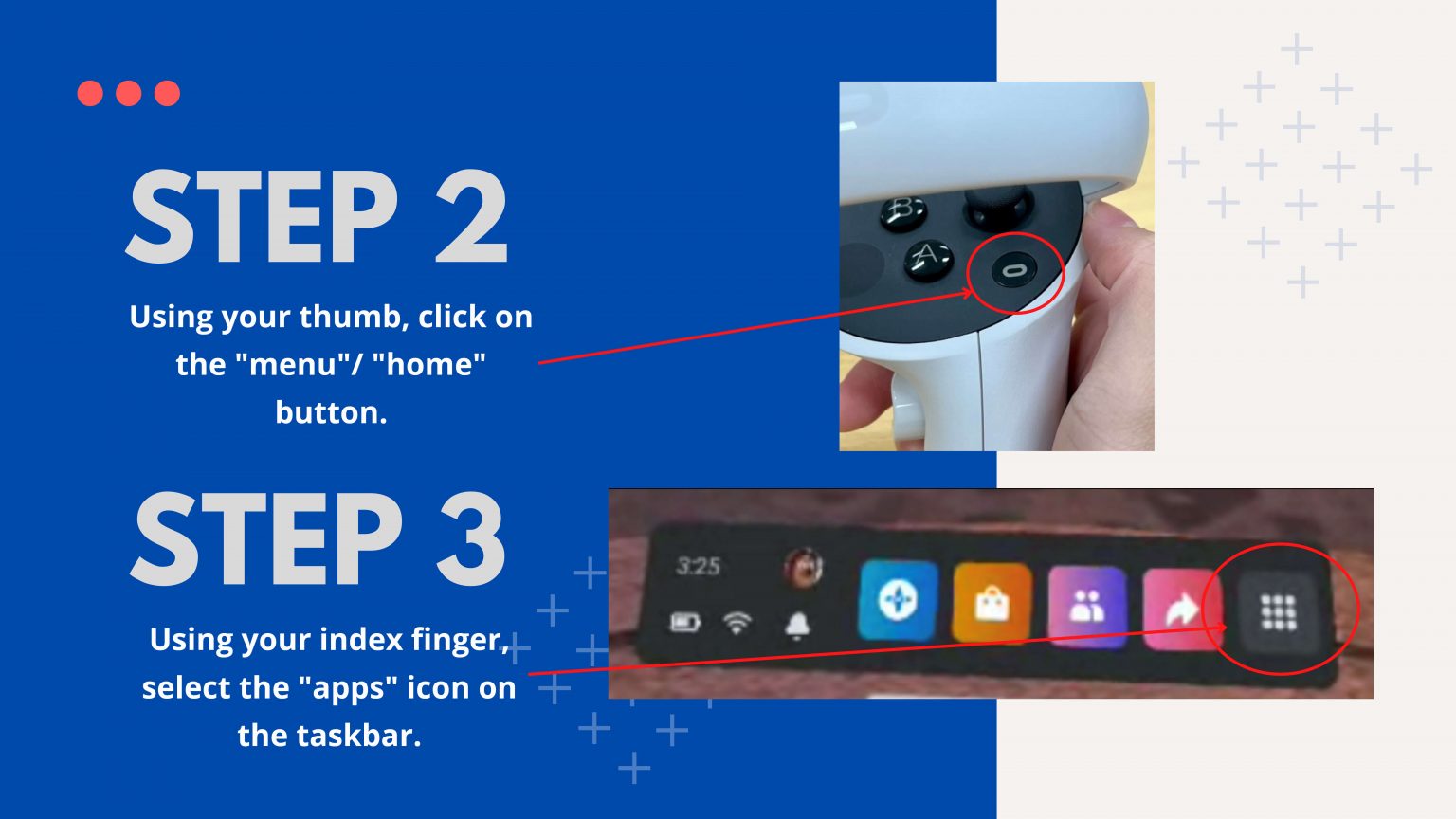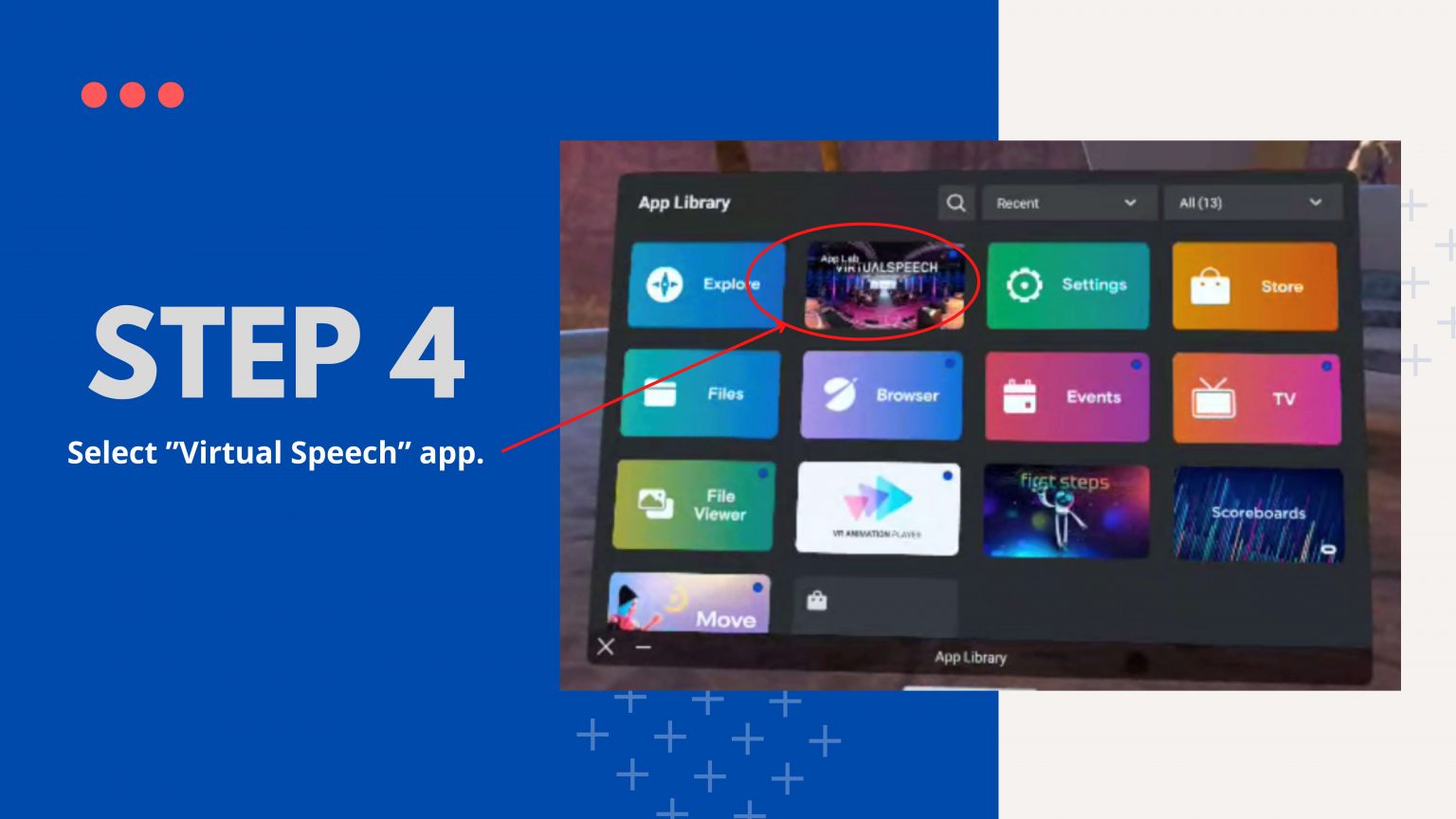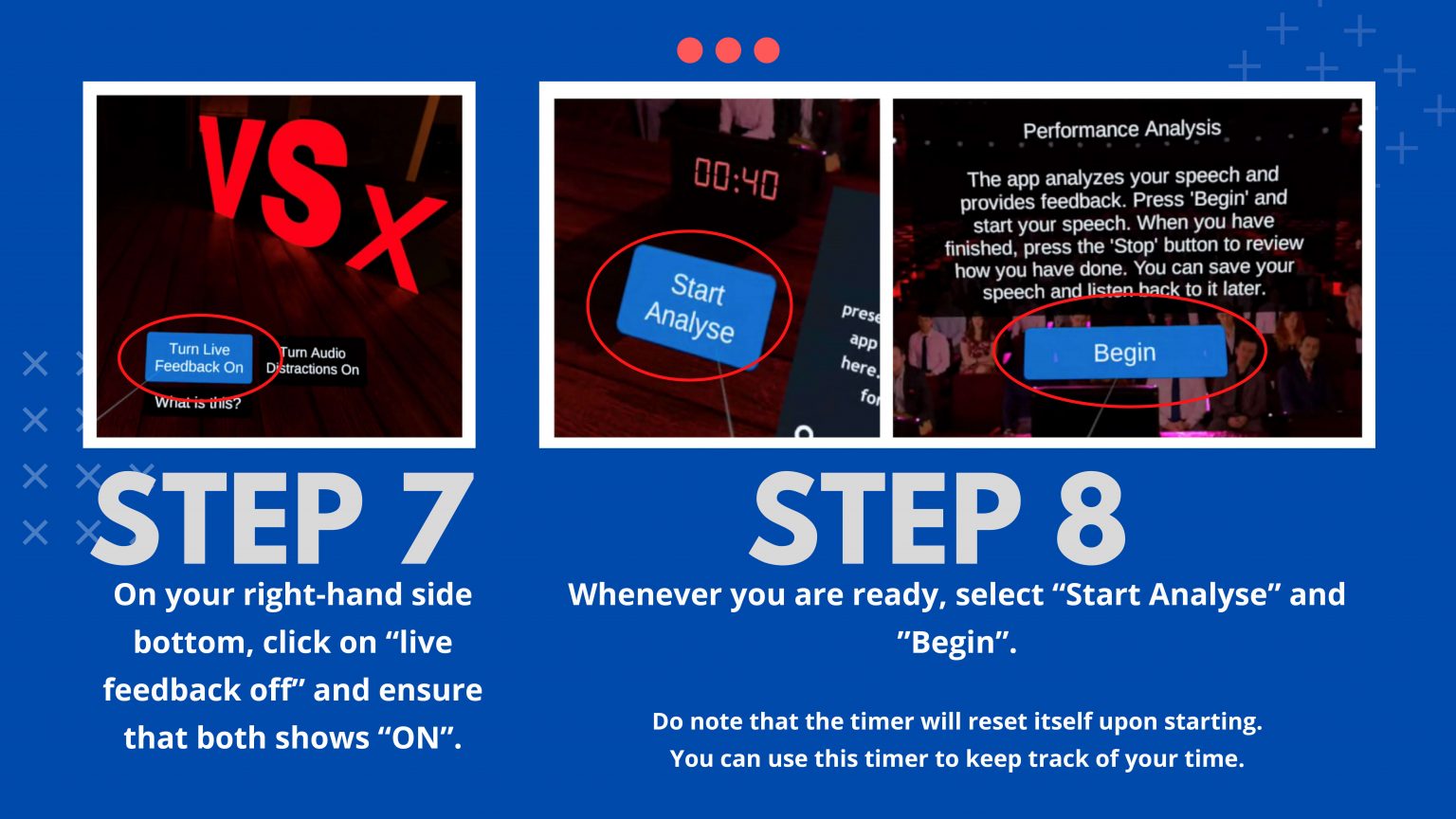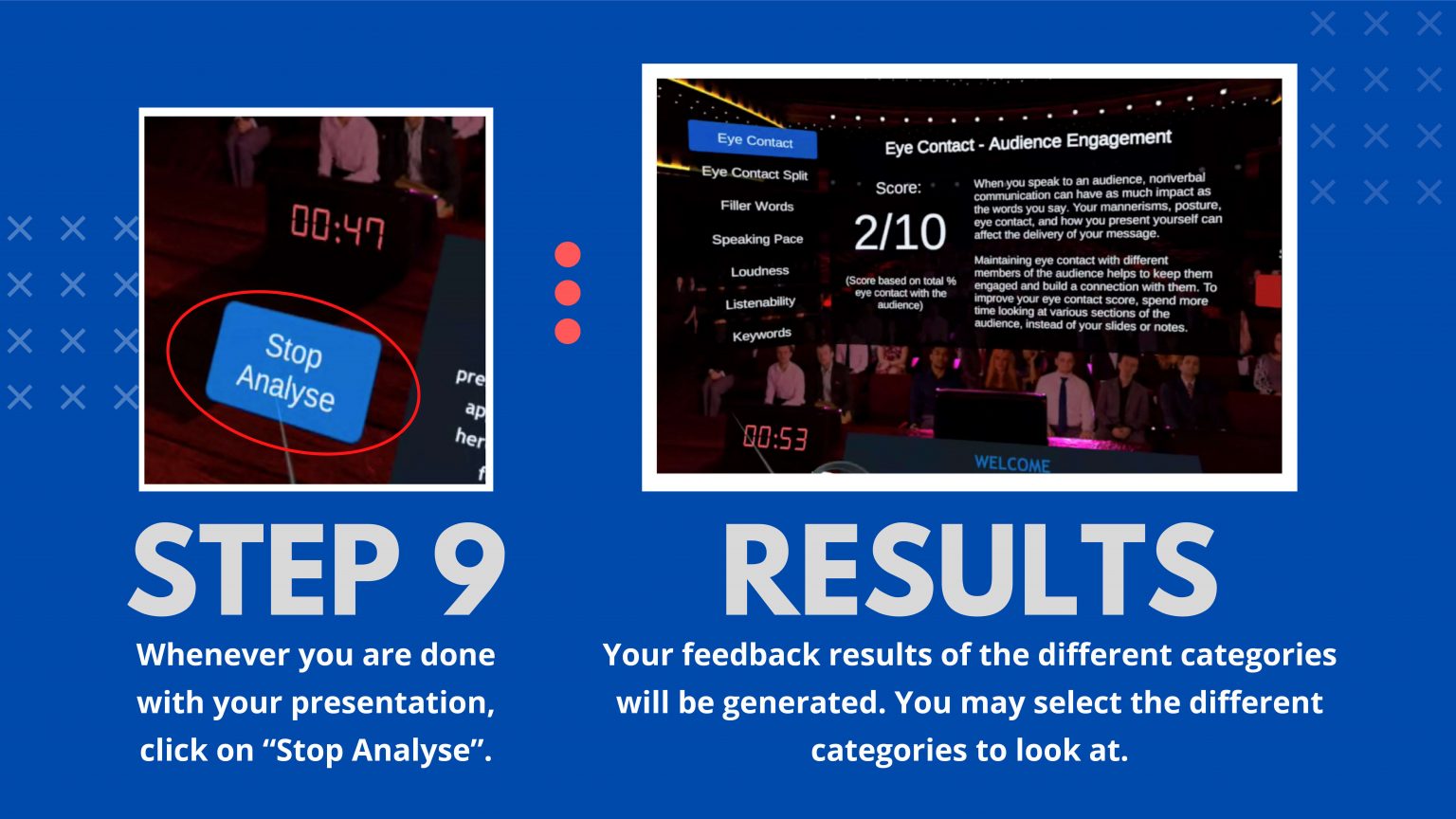How to get started on giving oral presentation
to virtual audience in an immersive environment
How to troubleshoot when using Oculus
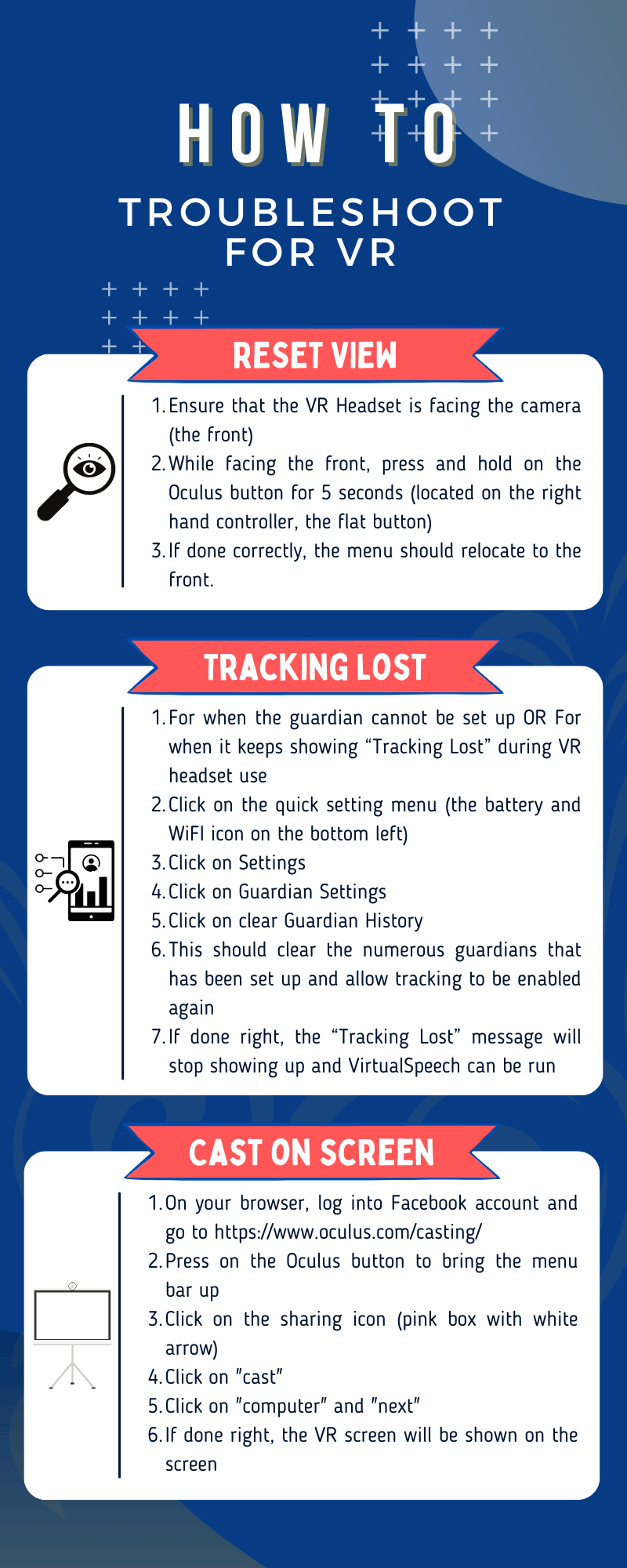
References
Beebe, S. A. (1974). Eye contact: A nonverbal determinant of speaker credibility. The Speech Teacher, 23(1), 21–25. https://doi.org/10.1080/03634527409378052
Chae, C., Kim, D., & Lee, H. T. (2021). A study on the analysis of the effects of passenger ship abandonment training using VR. Applied Sciences, 11(13), 5919. https://doi.org/10.3390/app11135919
Greenwald, S., Kulik, A., Kunert, A., Beck, S., Frohlich, B., Cobb, S., Parsons, S., Newbutt, N., Gouveia, C., Cook, C., Snyder, A., Payne, S., Holland, J., Buessing, S., Fields, G., Corning, W., Lee, V., Xia, L., & Maes, P. (2017). Technology and applications for collaborative learning in virtual reality. Philadelphia, PA: International Society of the Learning Sciences.
Horváth, I. (2021). An analysis of personalized learning opportunities in 3D VR. Frontiers of Computer Science. 3. https://doi.org/10.3389/fcomp.2021.673826
Karson, C. N., Berman, K. F., Donnelly, E. F., Mendelson, W. B., Kleinman, J. E., & Wyatt, R. J. (1981). Speaking, thinking, and blinking. Psychiatry Research, 5(3), 243–246. https://doi.org/10.1016/0165-1781(81)90070-6
Lucas, G. M., Gratch, J., King, A., & Morency, L.P. (2014). It’s only a computer: Virtual humans increase willingness to disclose. Computers in Human Behavior, 37, 94–100. https://doi.org/10.1016/j.chb.2014. 04.043
Parong, J., & Mayer, R. E. (2018). Learning science in immersive virtual reality. Journal of Educational Psychology, 110(6), 785–797. https://doi.org/10.1037/edu0000241
Quek, C. L. G., Tan, S. C., & Lim, K. Y. T. (2022). Exploring adult learner experience with VR-feedback system for improving online presentation. In S. Wilson, N. Arthars, D. Wardak, P. Yeoman, E. Kalman, & D. Y. T. Liu (Eds.). Reconnecting relationships through technology, Proceedings of the 39th International Conference on Innovation, Practice, and Research in the Use of Educational Technologies in Tertiary Education, ASCILITE 2022 in Sydney: e22145. https://doi.org/10.14742/apubs.2022.145
Radianti, J., Majchrzak, T. A., Fromm, J., & Wohlgenannt, I. (2020). A systematic review of immersive virtual reality applications for higher education: Design elements, lessons learned, and research agenda. Computers & Education, 147, 103778-. https://doi.org/10.1016/j.compedu.2019.103778
Schneider, J., Börner, D., Van Rosmalen, P., & Specht, M. (2017). Presentation trainer: What experts and computers can tell about your nonverbal communication. Journal of Computer Assisted Learning, 33(2), 164– 177. https://doi.org/10.1111/jcal.12175
Schott, C., & Marshall, S. (2018). Virtual reality and situated experiential education: A conceptualization and exploratory trial. Journal of Computer Assisted Learning, 34(6), 843–852. https://doi.org/10.1111/jcal.12293
Tanveer, M. I., Lin, E., & Hoque, M. E. (2015). Rhema: A real-time in-situ intelligent interface to help people with public speaking. Proceedings of the 20th International Conference on Intelligent User Interfaces, 286–295. https://doi.org/10. 1145/2678025.2701386
Tan, E.Y.A., & Quek, C.L. (2022, December). Exploring Virtual Reality (VR)-Generated Feedback Learning Environment for Interview Skills: A Case Study. Paper presented at eLearning Forum Asia 2022, Manila, Singapore.
Tan, Y., Xu, W., Li, S., & Chen, K. (2022). Augmented and Virtual Reality (AR/VR) for education and training in the AEC Industry: A systematic review of research and applications. Buildings, 12(10),1529. https://doi.org/10.3390/buildings12101529
Van Ginkel, S., Gulikers, J., Biemans, H., & Mulder, M. (2015). Towards a set of design principles for developing oral presentation competence: A synthesis of research in higher education. Educational Research Review, 14, 62–80. https://doi.org/10.1016/j.edurev.2015.02.002
Van Ginkel, S., Gulikers, J., Biemans, H., Noroozi, O., Roozen, M., Bos, T., Van Tilborg, R., Van Halteren, M., & Mulder, M. (2019). Fostering oral presentation competence through a virtual reality-based task for delivering feedback. Computers & Education, 134, 78–97. https://doi.org/10.1016/j.compedu.2019.02.006
Wörtwein, T., Morency, L.P., & Scherer, S. (2015). Automatic assessment and analysis of public speaking anxiety: A virtual audience case study. Proceedings of International Conference on Affective Computing and Intelligent Interaction (ACII), 187–193. https://doi.org/10.1109/acii.2015.7344570
Studies on the use of VR for enhancing training effectiveness are rare, and the study on its effects remain to be a vast area for further exploration and analysis.
Get in touch
Email Us
Quek Choon Lang Gwendoline
choonlang.quek@nie.edu.sg
Call Us
+(65) 6790 3273
